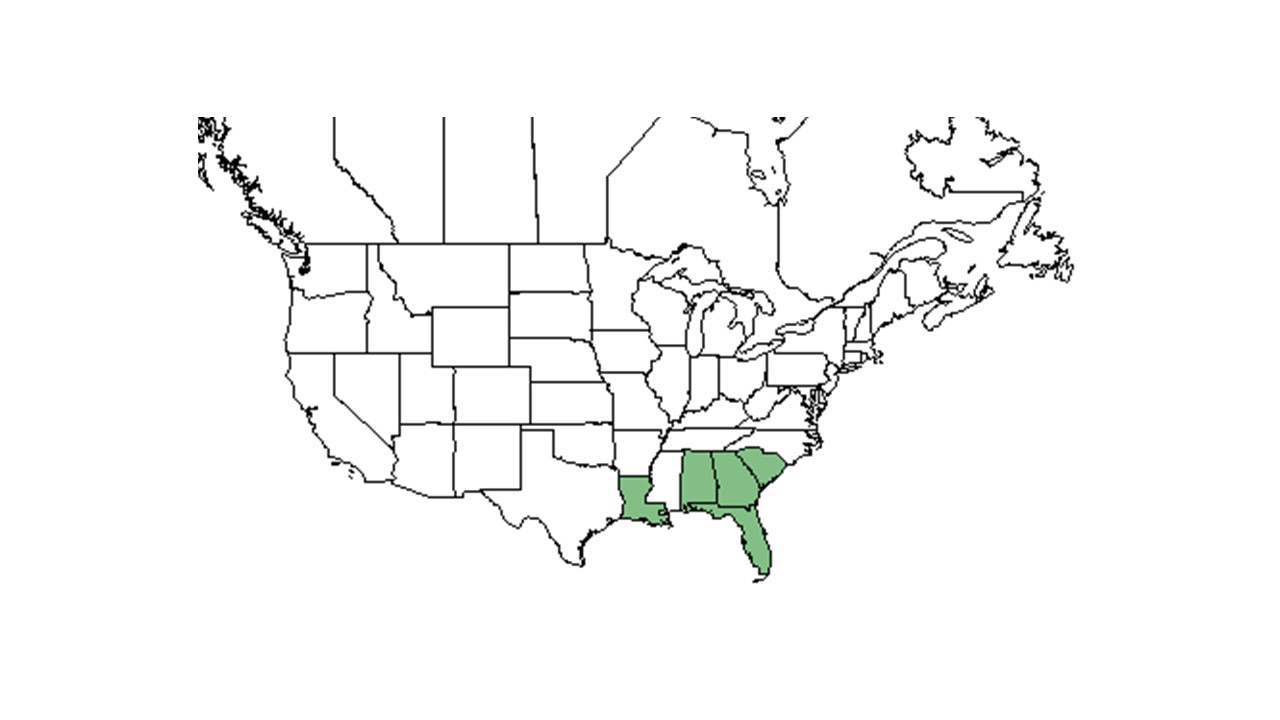Difference between revisions of "Dyschoriste oblongifolia"
(→References and notes) |
Krobertson (talk | contribs) |
||
| Line 20: | Line 20: | ||
<!-- Basic life history facts such as annual/perrenial, monoecious/dioecious, root morphology, seed type, etc. --> | <!-- Basic life history facts such as annual/perrenial, monoecious/dioecious, root morphology, seed type, etc. --> | ||
See [http://plants.usda.gov/core/profile?symbol=DYOB NRCS Plants Database] | See [http://plants.usda.gov/core/profile?symbol=DYOB NRCS Plants Database] | ||
| − | Common Name: oblongleaf snakeherb | + | Common Name: oblongleaf snakeherb. |
This species is a perennial.<ref name="Creech et al 2012"/> | This species is a perennial.<ref name="Creech et al 2012"/> | ||
Revision as of 13:20, 13 July 2015
| Dyschoriste oblongifolia | |
|---|---|

| |
| photo by Kevin Robertson | |
| Scientific classification | |
| Kingdom: | Plantae |
| Division: | Magnoliophyta - Flowering plants |
| Class: | Magnoliopsida - Dicotyledons |
| Order: | Scrophulariales |
| Family: | Acanthaceae |
| Genus: | Dyschoriste |
| Species: | D. oblongifolia |
| Binomial name | |
| Dyschoriste oblongifolia (Michx.) Kunz | |

| |
| Natural range of Dyschoriste oblongifolia. Image from USDA NRCS Plants Database. | |
Contents
Description
See NRCS Plants Database Common Name: oblongleaf snakeherb. This species is a perennial.[1]
Distribution
The Florida distribution is provided by the Atlas of Florida Vascular Plants.
Ecology
Habitat
Indicator of longleaf pine woodlands; not found on pasture or cultivated lands.[2]D. oblongifolia appears to be restricted to soils with a sandy A horizon, whether in Entisols (sandhills) or Ultisols (clayhills) (KMR,[3]). Native undisturbed longleaf pine assosciate; found in burned and unburned areas.[1] Resides in upland and lowland areas old growth longleaf pine/wiregrass sandhill habitat.[4] A common forb in a fire-maintanied forest structure that is savanna-like with an open canopy of P. palustris.[5] It is found in pineland.[6] It is abundant in longleaf pine communities.[7] Resides in upland, midslope, and lowland areas old growth longleaf pine/wiregrass sandhill habitat.[4]. Dyschoriste oblongifolia is restricted to native groundcover with a statistical affinity in upland pinelands of South Georgia.[3]. This species also has been observed in scrub environments, turkey oak barrens, wiregrass-palmetto flatwoods, mixed hardwood forests, mixed pine-hardwoods, and slopes and ridges of longleaf pine forests (FSU Herbarium) It has also been seen growing in human disturbed areas such as recently cleared pine forests, ruderal edges of sandhills, roadsides, plowed areas, bulldozed areas, and open fields (FSU Herbarium). D. oblongifolia can grow in both full light and semi shaded environments in deep, loose, and/or loamy sands along ridges and generally flat areas (FSU Herbarium).
Phenology
D. oblongifolia germinates and flowers within a few weeks following fire at a wide range of burn dates, at least from March to July (KMR). It has been observed to flower from April to October (FSU Herbarium).
Seed dispersal
By ants.[1]
Seed bank and germination
Fire ecology
It has been found in both burned and unburned areas (FSU Herbarium). It resprouts after fire.[7] It flowers within two months of burning in the spring.KMRExtremely vulnerable to disturbance.[8] Was observed to resprout one month after a fire in July of 1993.[9].
Pollination
Use by animals
Diseases and parasites
Conservation and management
Cultivation and restoration
References and notes
Florida State University Robert K. Godfrey Herbarium database. URL: http://herbarium.bio.fsu.edu. Last accessed: June 2014.
Collectors: Andre Clewell, Robert Godfrey, Robert Kral, P.L. Redfearn, Jr., William P. Adams, Loran Anderson, Richard Carter, H. Larry Stripling, S.W. Leonard, Gwynn W. Ramsey, R.S. Mitchell, George Cooley, James D. Ray, Jr., C.E. Wood, C.E. Smith, R.J. Eaton, Roy Komarek, Gary R. Knight, Mark A. Garland, C. Jackson, Mary Margaret Williams, T. Myint, Grady W. Reinert, Bill & Pam Anderson, John B. Nelson, R. L. Wilbur, C. R. Bell, Rodie White, R. A. Norris, D. C. Hunt, and Wilson Baker.
States and Counties: Alabama: Heny. Florida: Charlotte, Citrus, Clay, Columbia, Gadsden, Jackson, Leon, Levy, Liberty, Marion, Orange, Pasco, Polk, Seminole, Suwannee, Taylor, Volusia, and Wakulla. Georgia: Bryan, Grady, McIntosh, Seminole, Sumter, and Thomas. South Carolina: Hampton and Jasper.
- ↑ 1.0 1.1 1.2 Creech, M. N., L. K. Kirkman, et al. (2012). "Alteration and Recovery of Slash Pile Burn Sites in the Restoration of a Fire-Maintained Ecosystem." Restoration Ecology 20(4): 505-516.
- ↑ Brudvig, L. A. and E. I. Damschen (2010). "Land-use history, historical connectivity, and land management interact to determine longleaf pine woodland understory richness and composition." Ecography 34: 257-266.
- ↑ 3.0 3.1 Ostertag, T.E. and K.M. Robertson. 2007. A comparison of native versus old-field vegetation in upland pinelands managed with frequent fire, South Georgia, USA. Tall Timbers Fire Ecology Conference Proceedings 23:109-120.
- ↑ 4.0 4.1 Gilliam, F. S., W. J. Platt, et al. (2006). "Natural disturbances and the physiognomy of pine savannas: A phenomenological model." Applied Vegetation Science 9: 83-96.
- ↑ Kirkman, L. K., M. B. Drew, et al. (1998). "Effects of experimental fire regimes on the population dynamics of Schwalbea americana L." Plant Ecology 137: 115-137.
- ↑ Wade, K. A. and E. S. Menges (1987). "Effects of fire on invasion and community structure of a southern Indiana cedar barrens." Indiana Academy of Science 96: 273-286.
- ↑ 7.0 7.1 Simkin, S. M., W. K. Michener, et al. (2001). "Plant response following soil disturbance in a longleaf pine ecosystem." Journal of the Torrey Botanical Society 128: 208-218.
- ↑ Kirkman, L. K., K. L. Coffey, et al. (2004). "Ground cover recovery patterns and life-history traits: implications for restoration obstacles and opportunities in a species-rich savanna." Journal of Ecology 92(3): 409-421.
- ↑ Pavon, M. L. (1995). Diversity and response of ground cover arthropod communities to different seasonal burns in longleaf pine forests. Tallahassee, Florida A&M University.